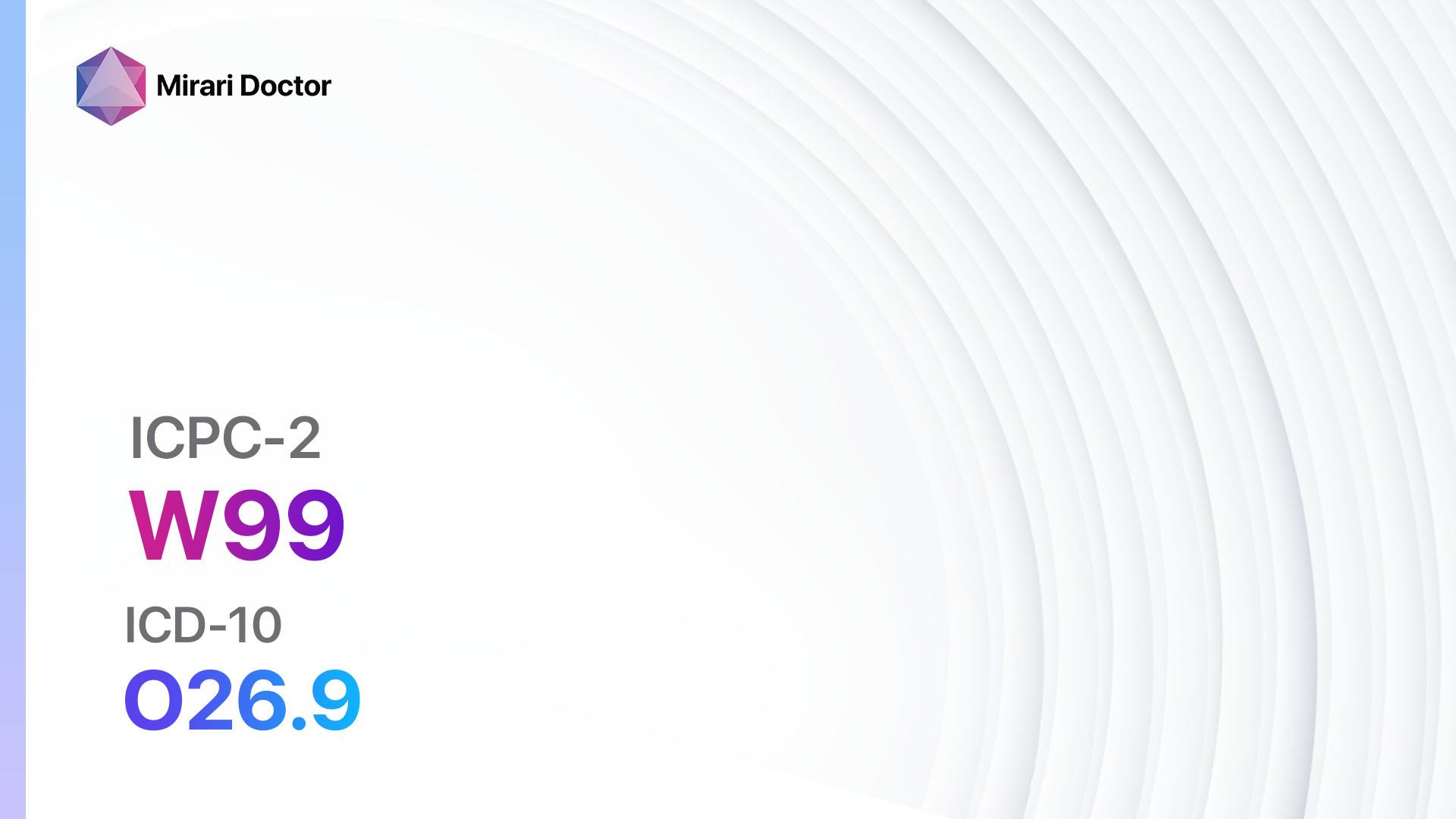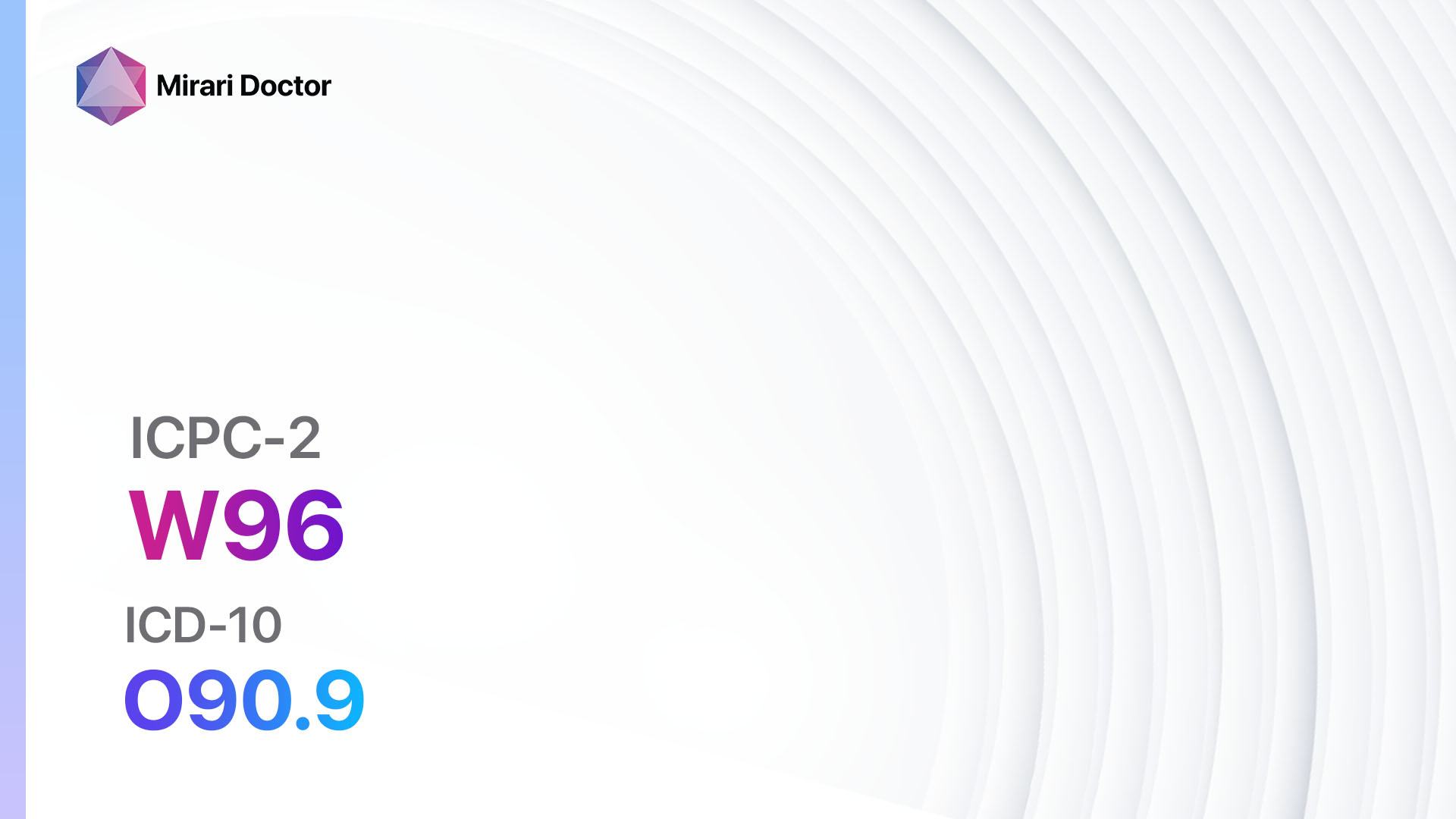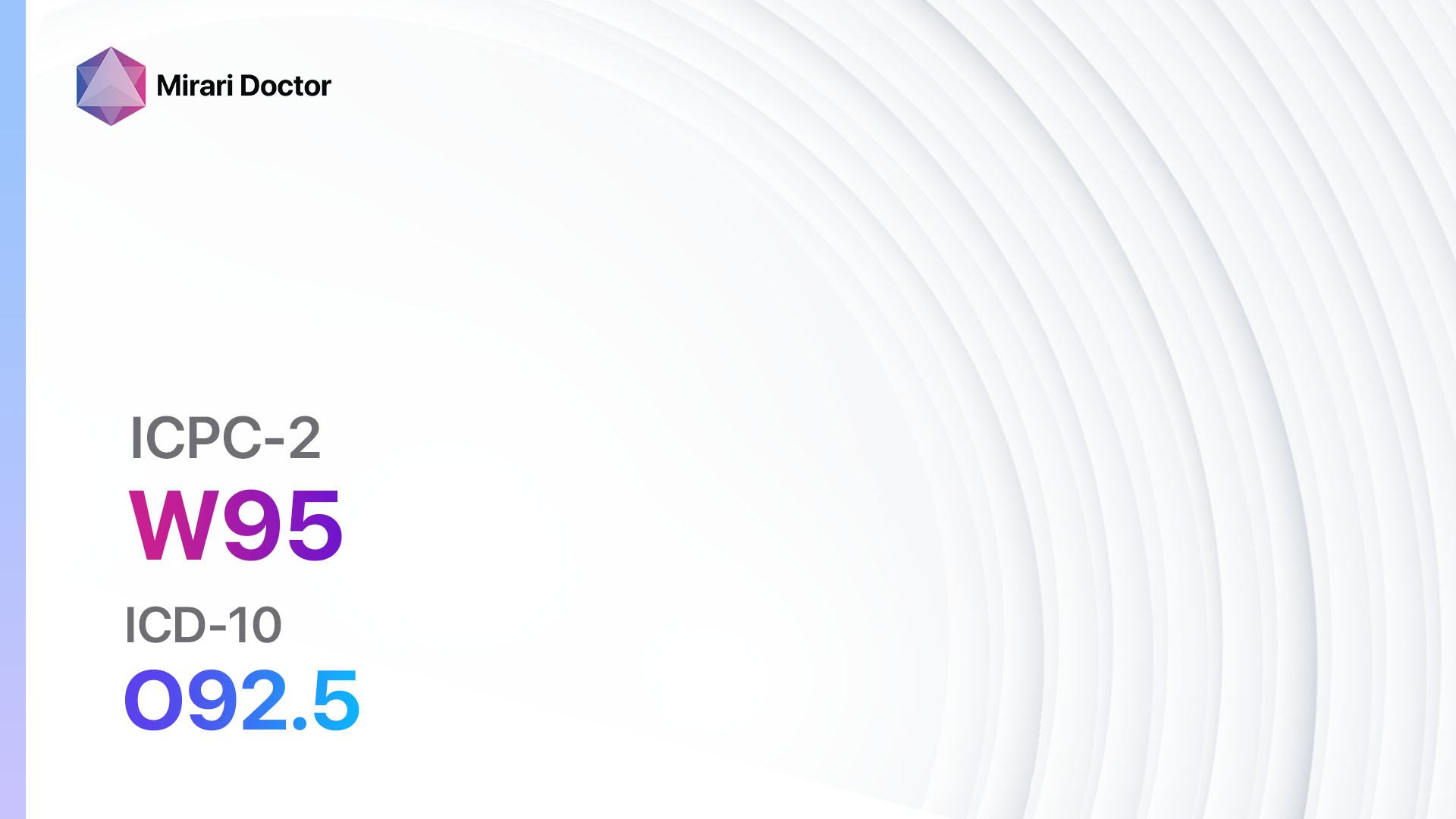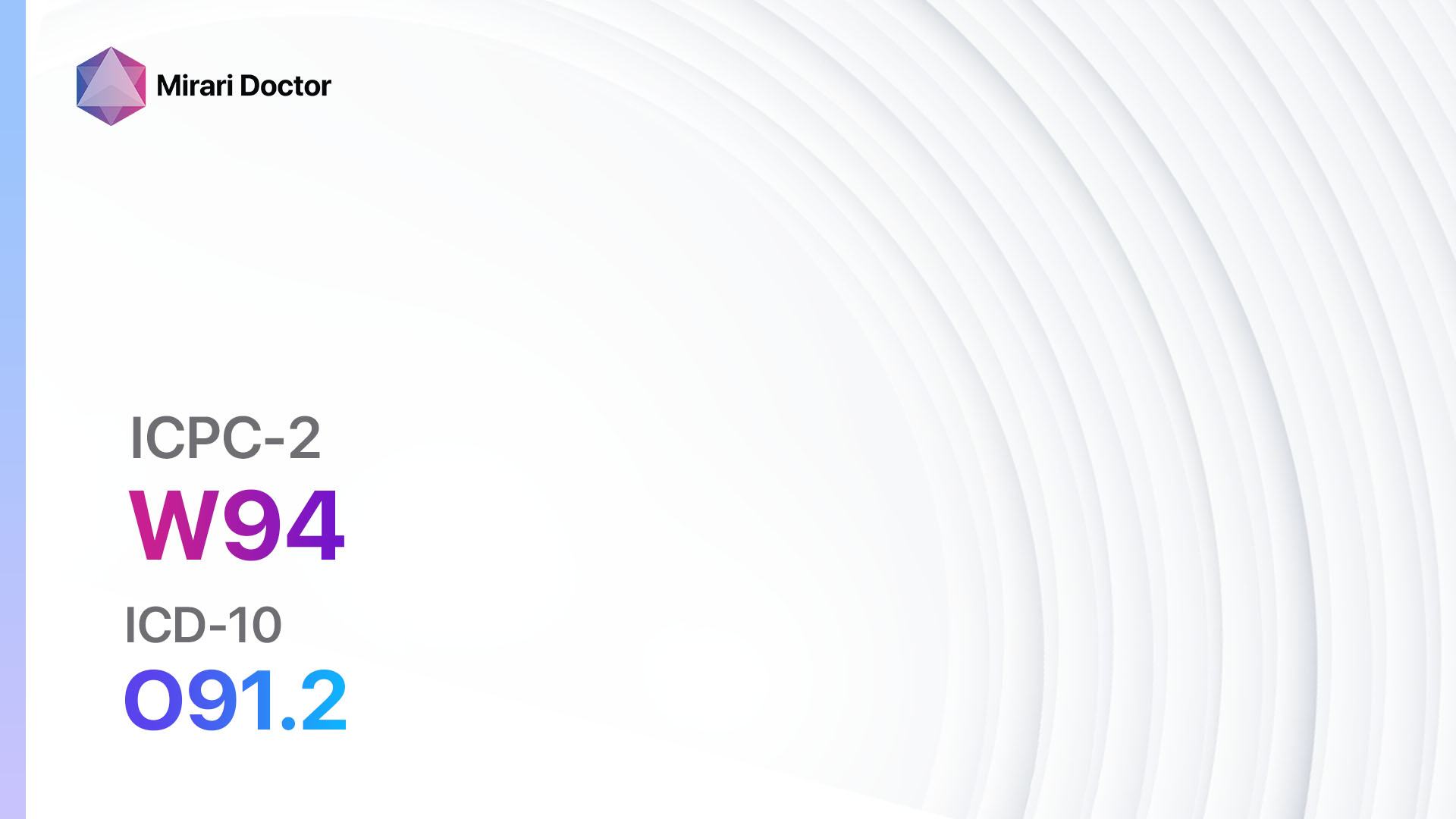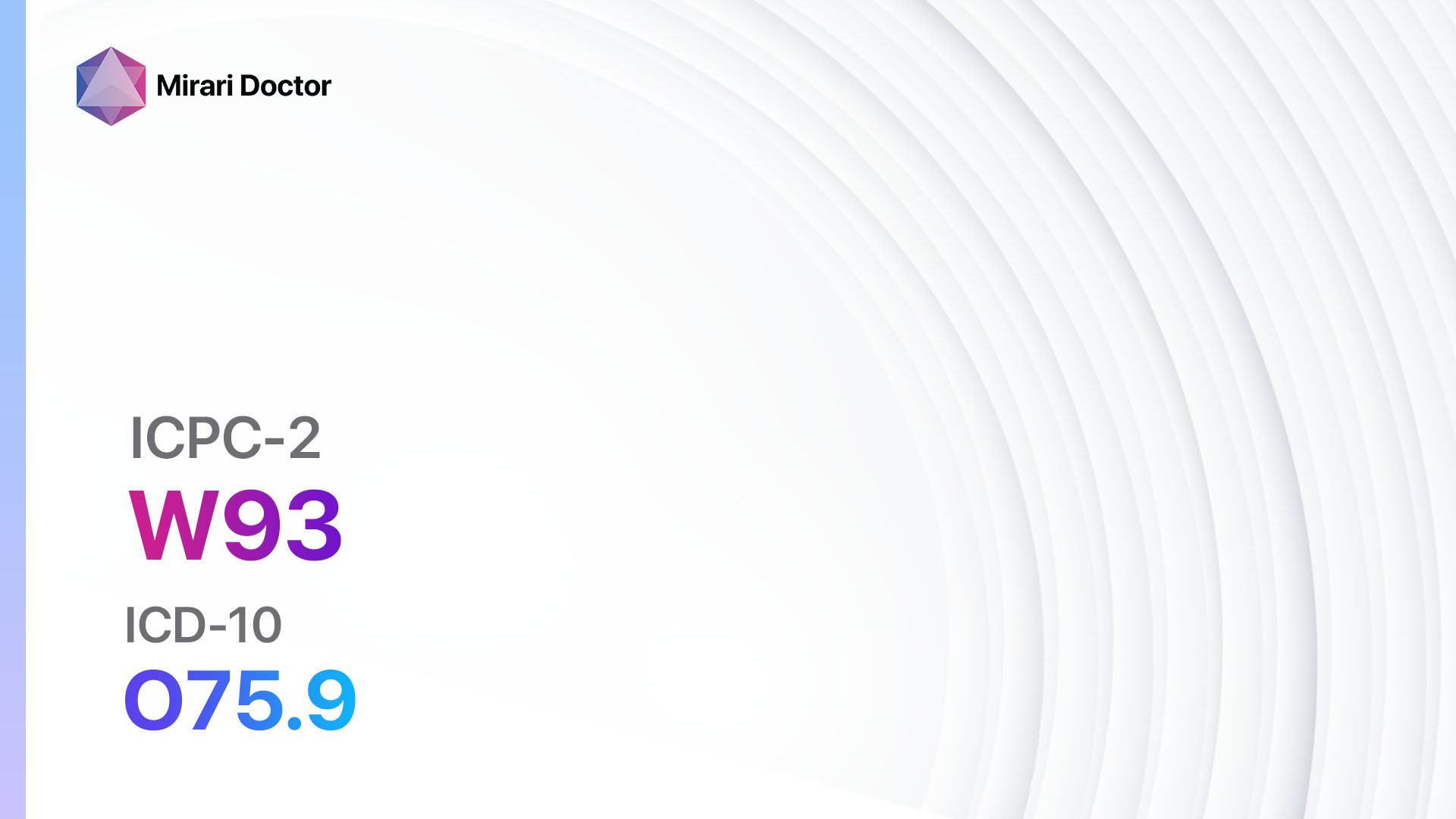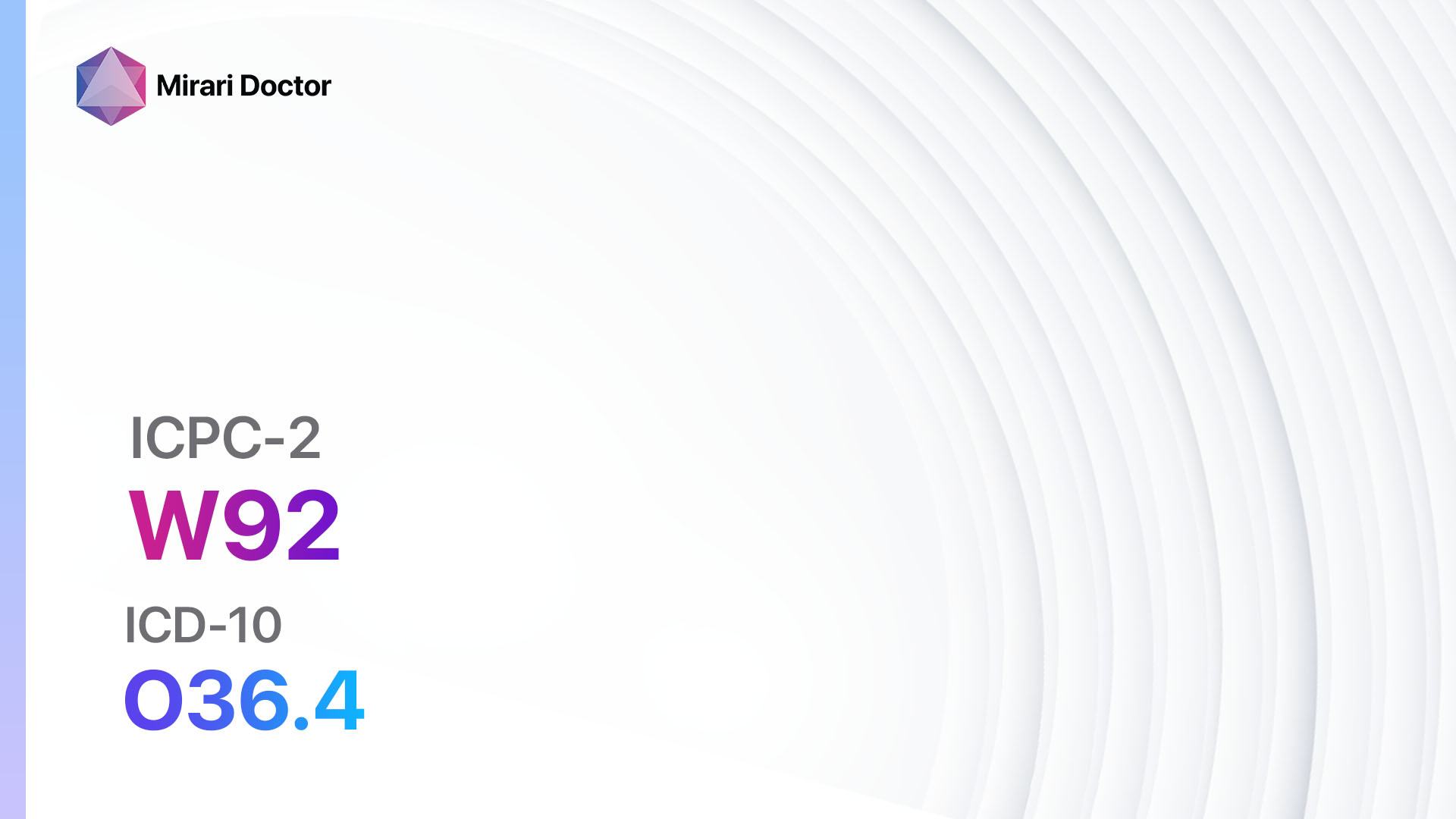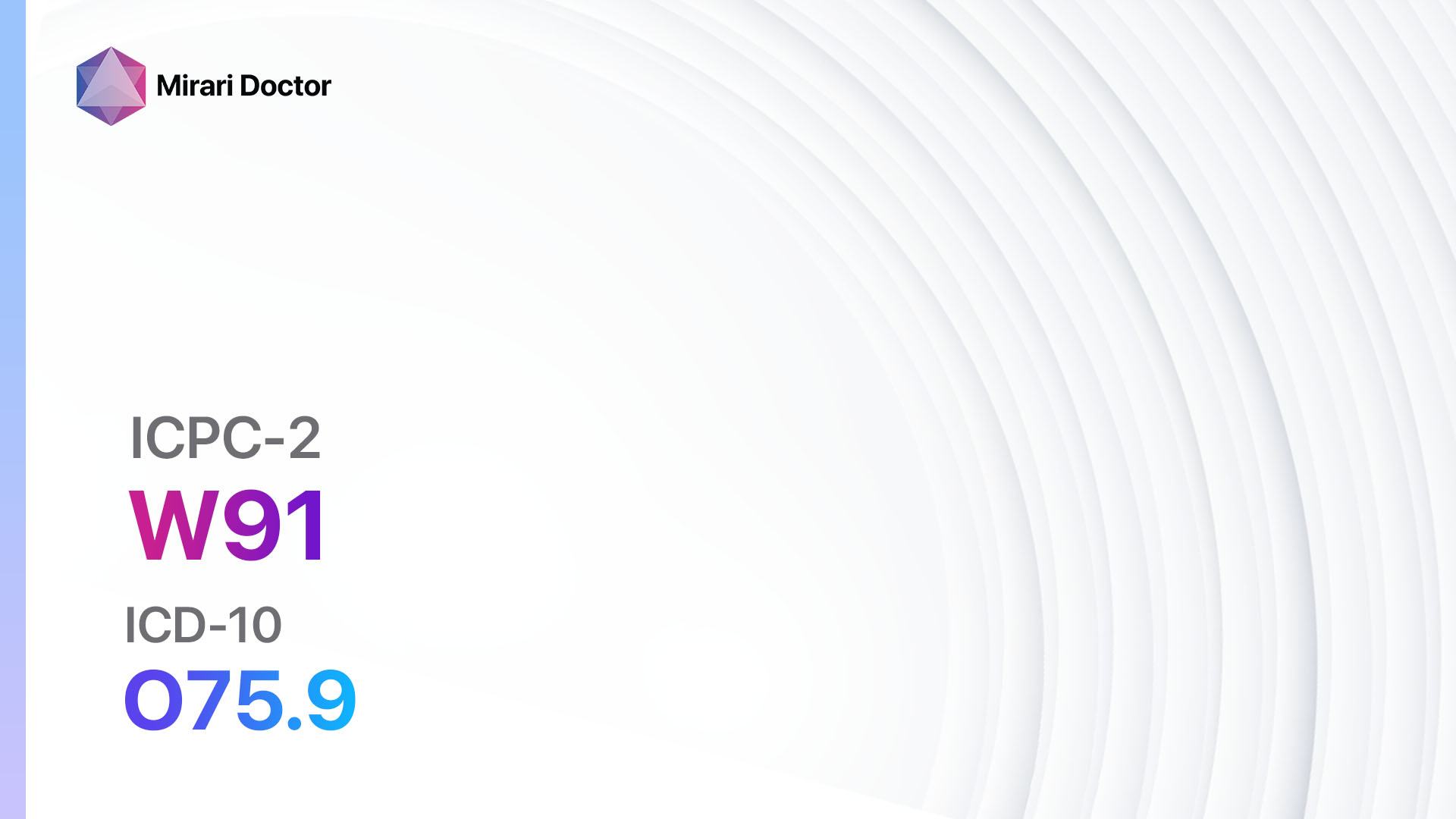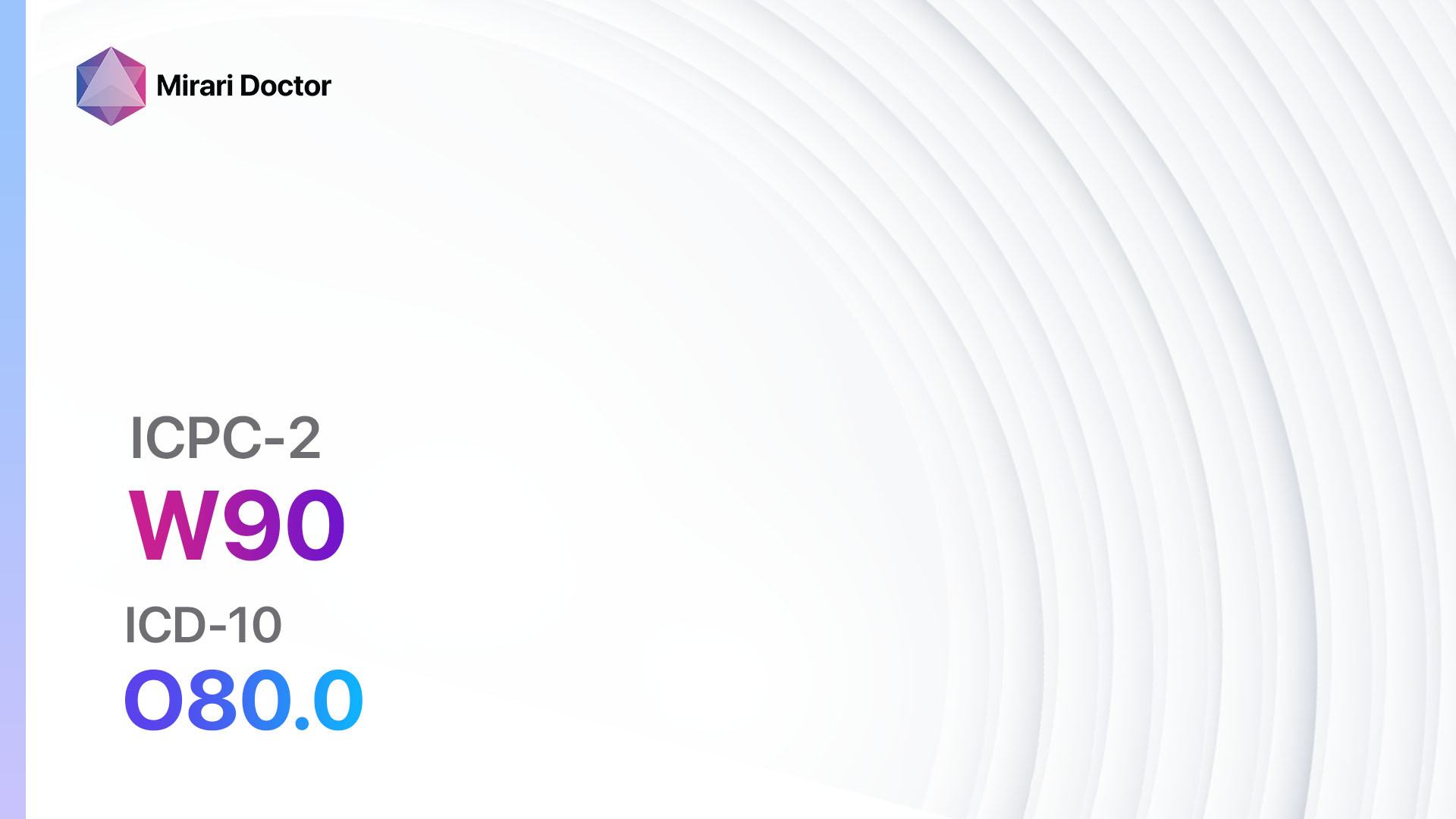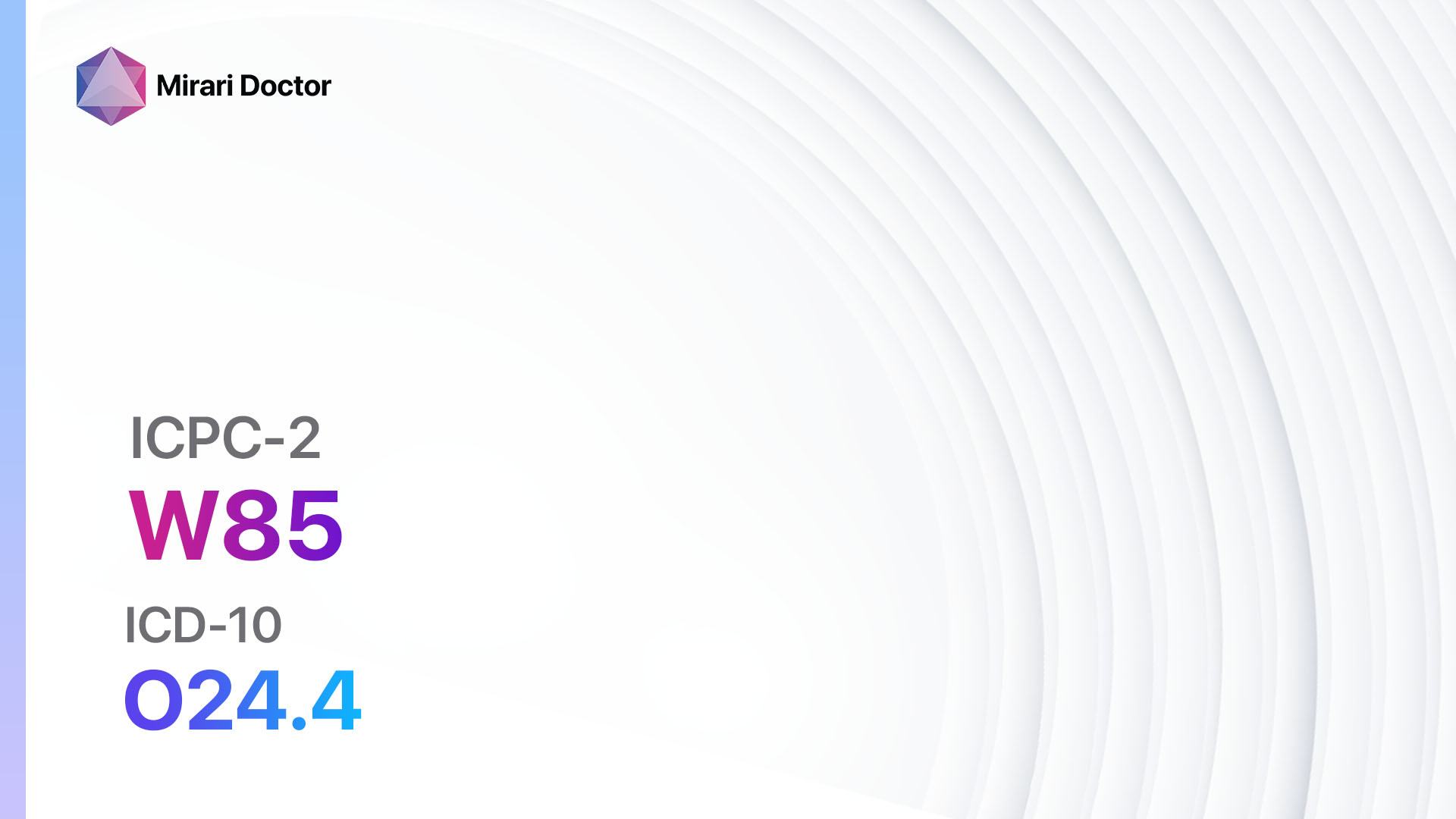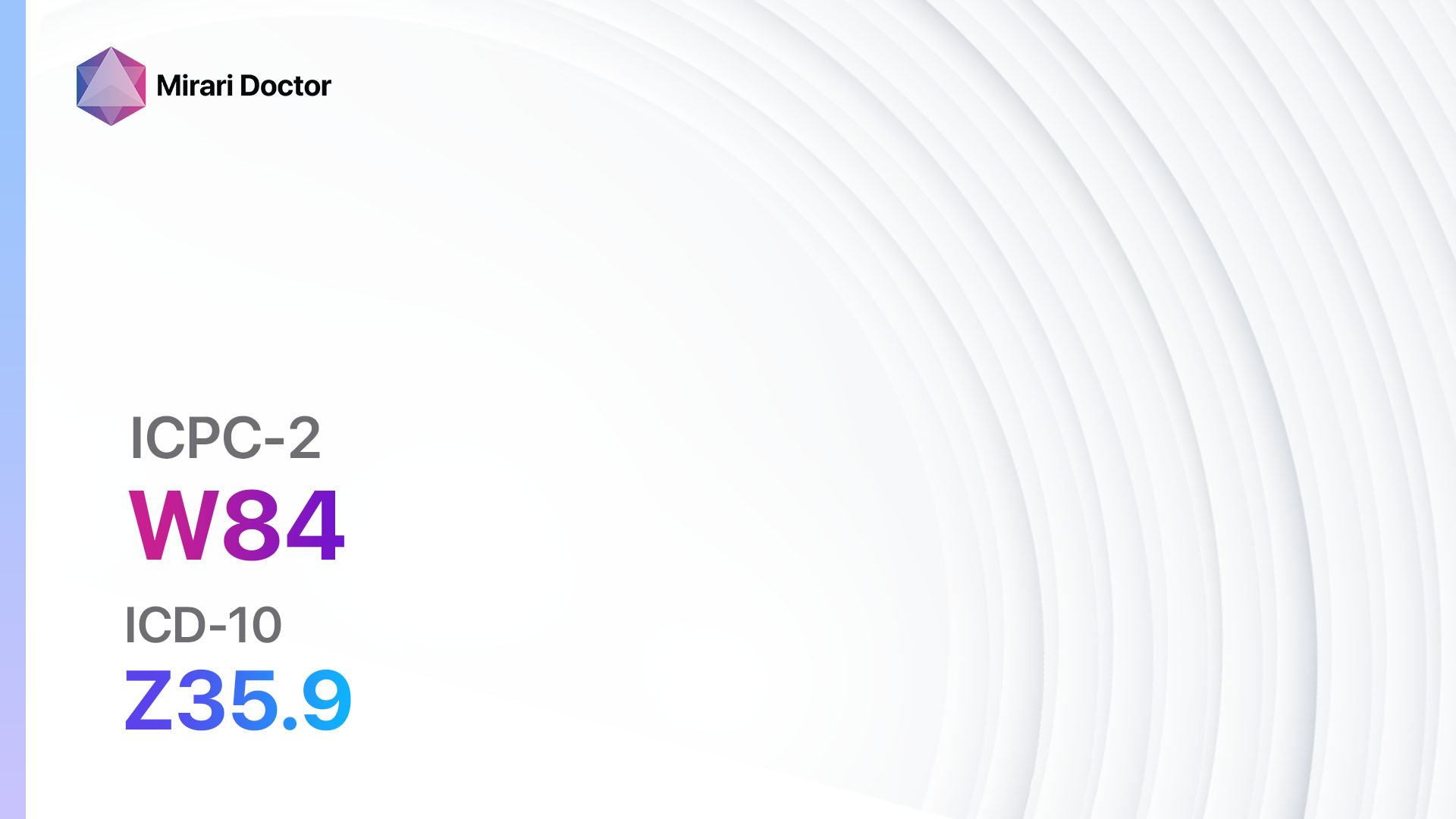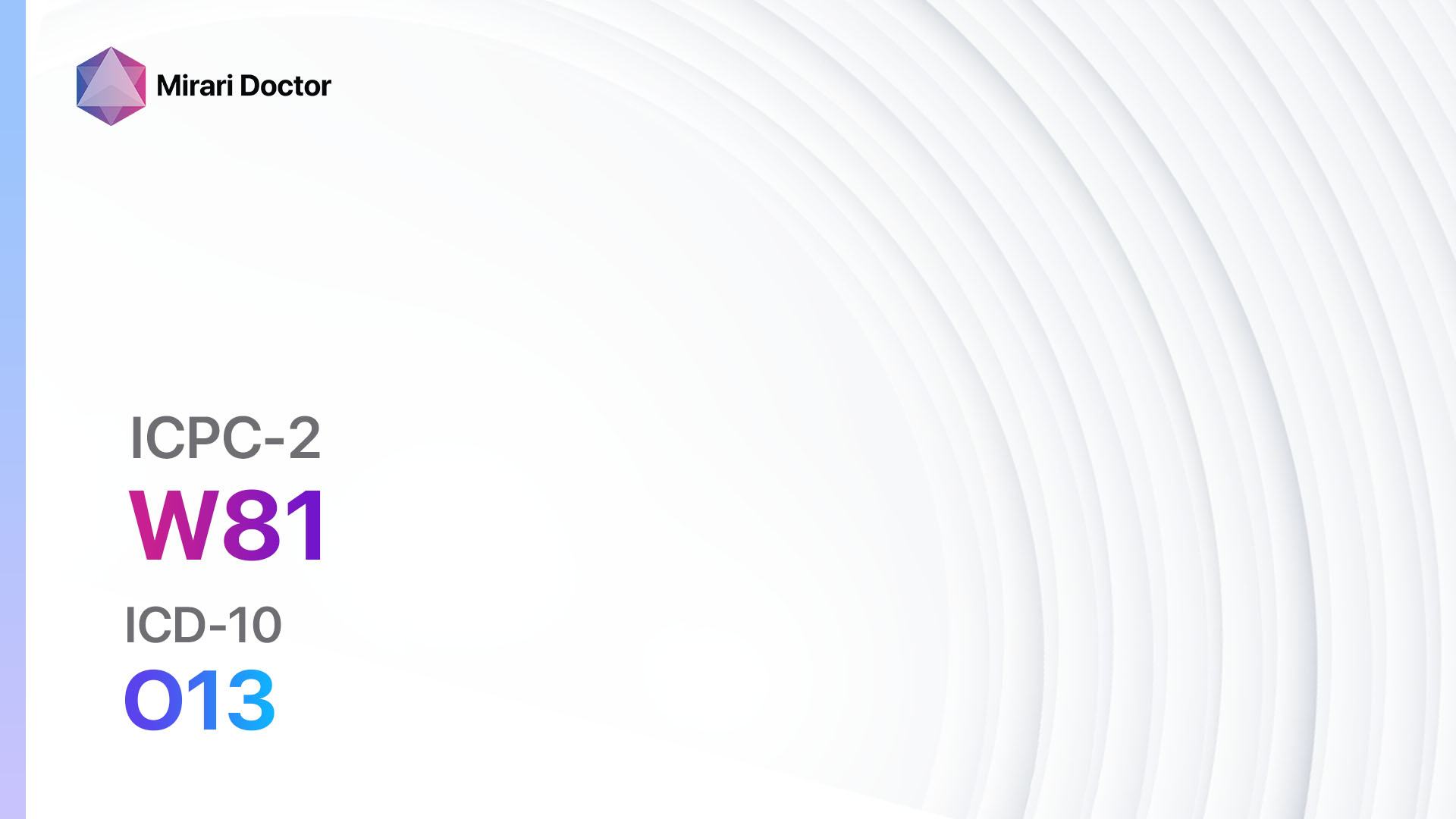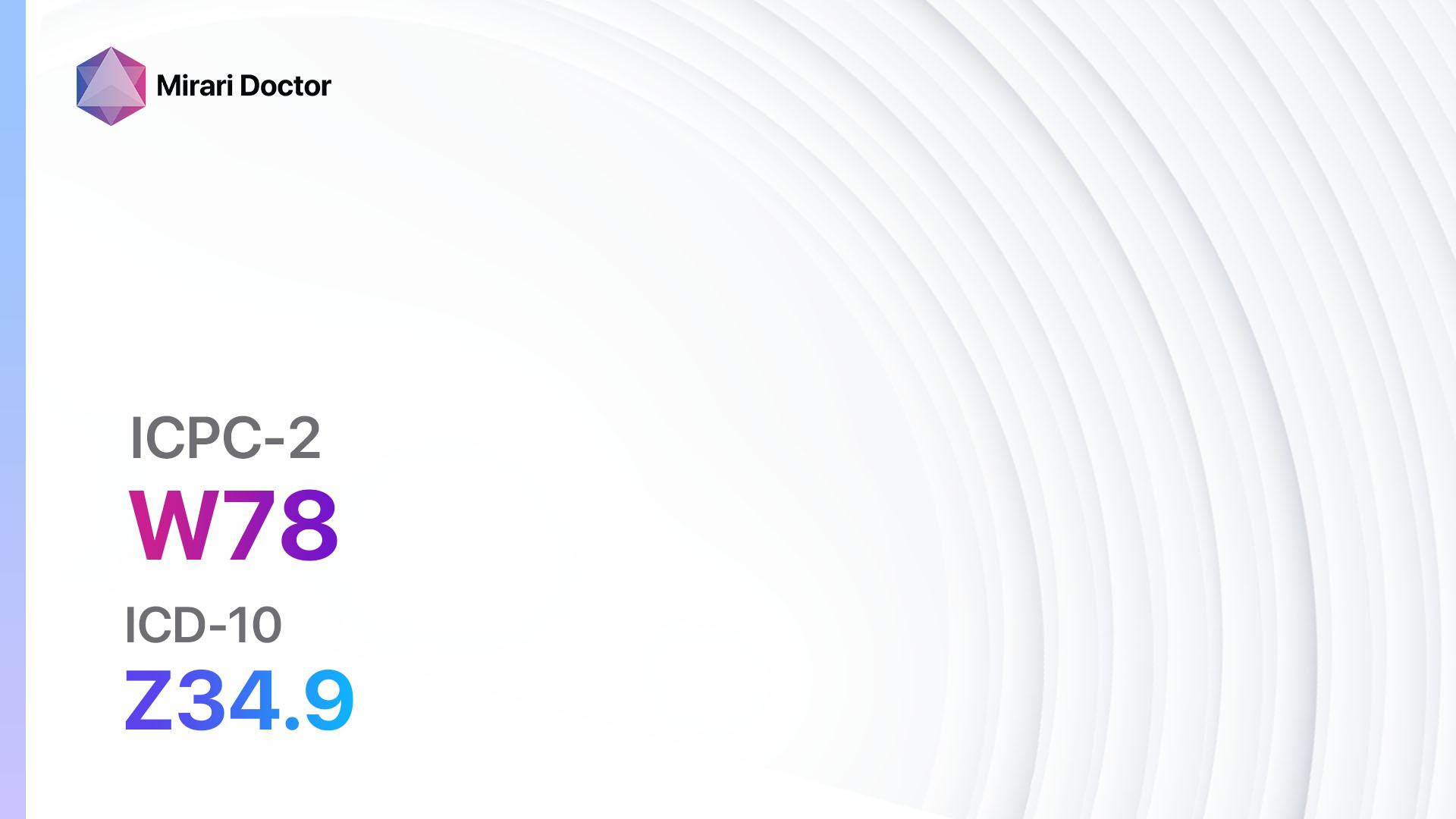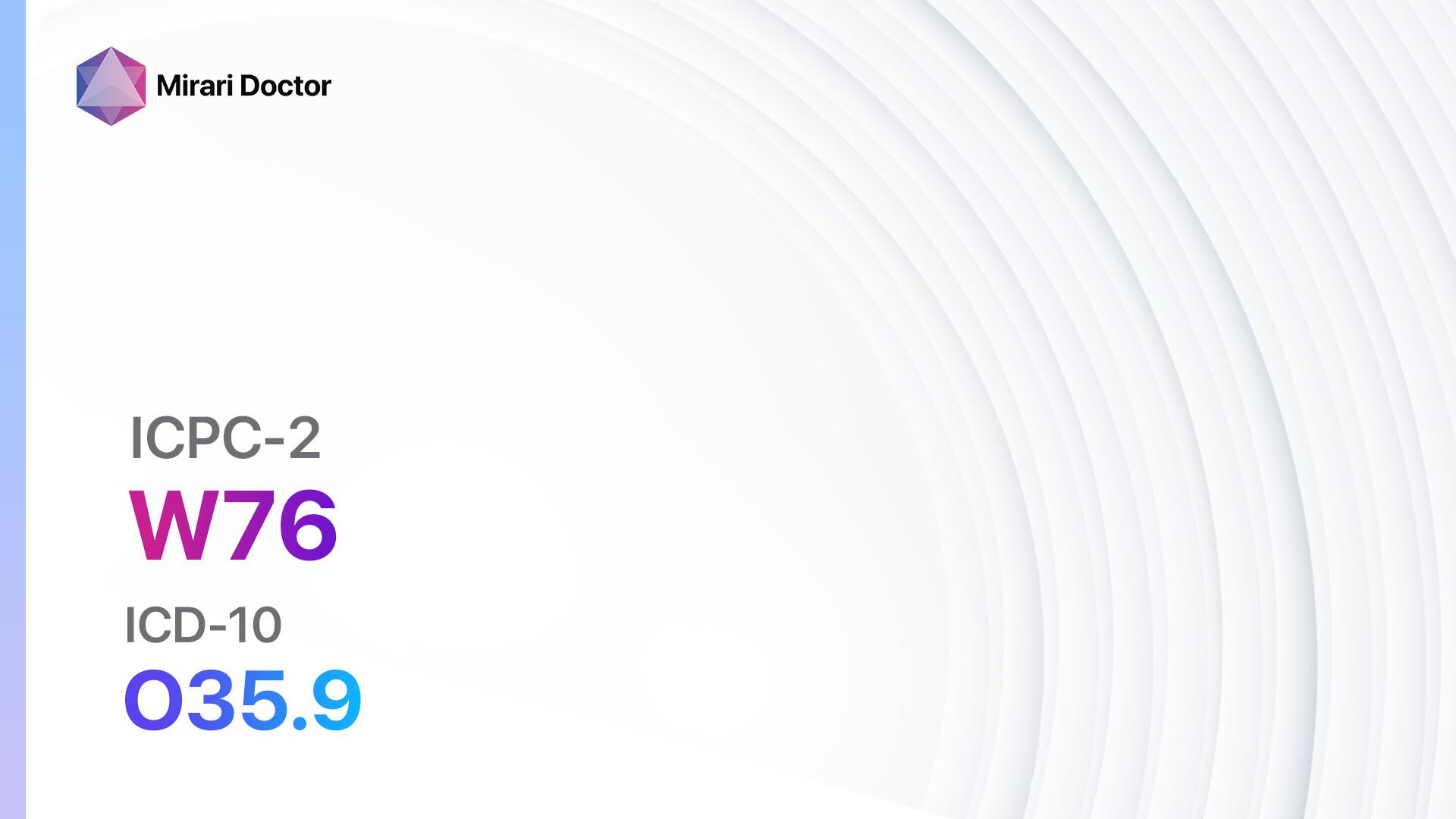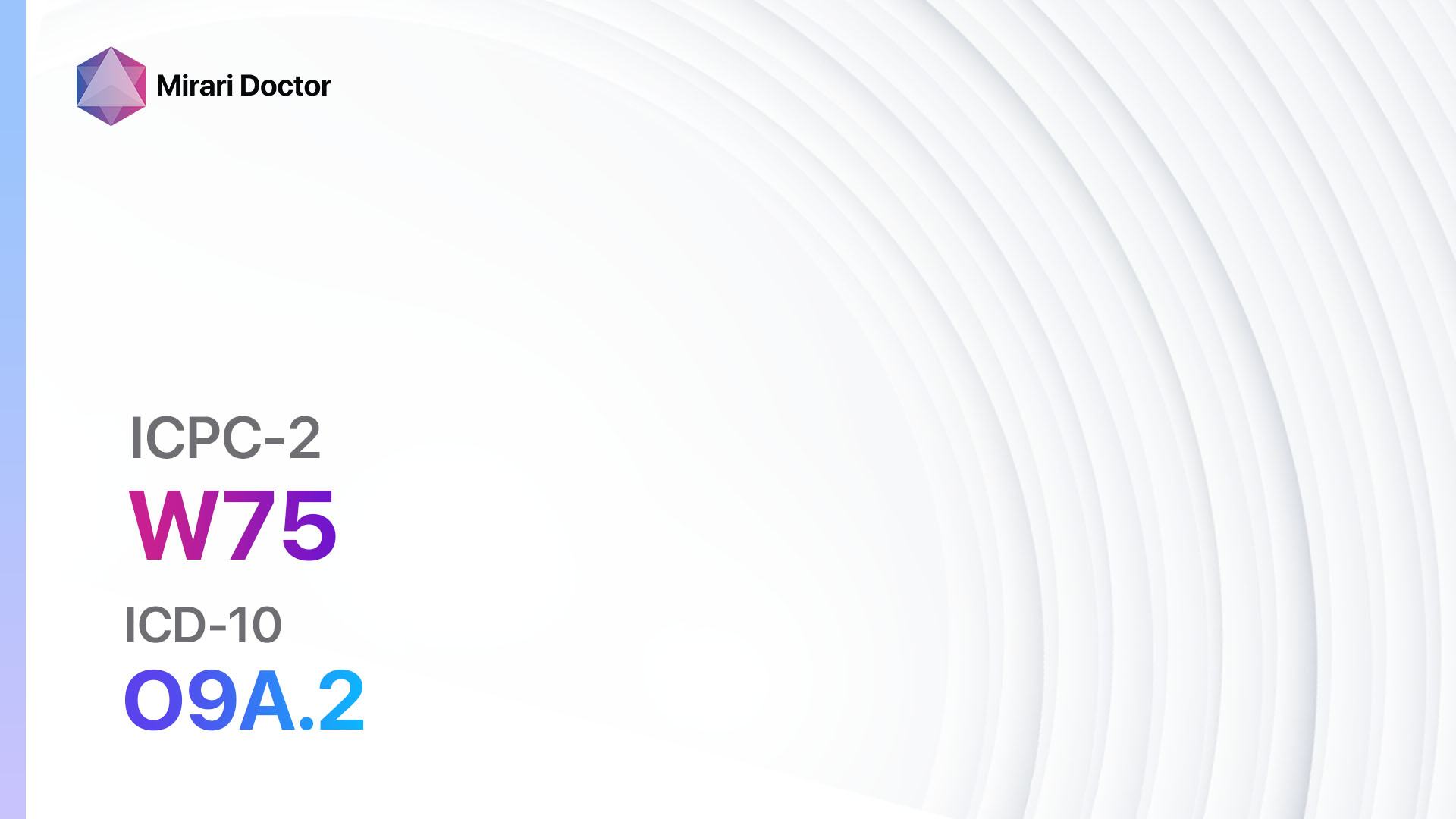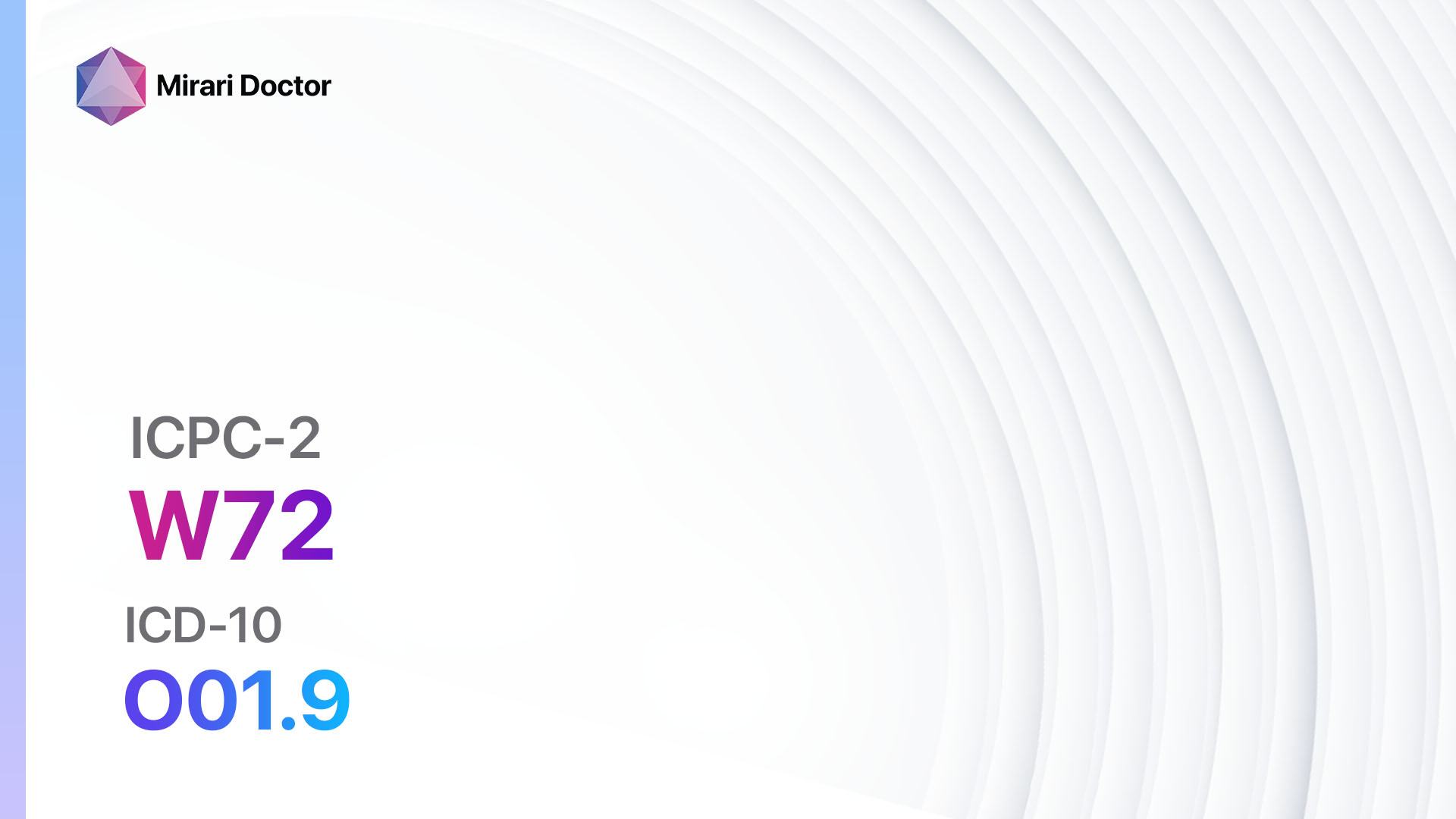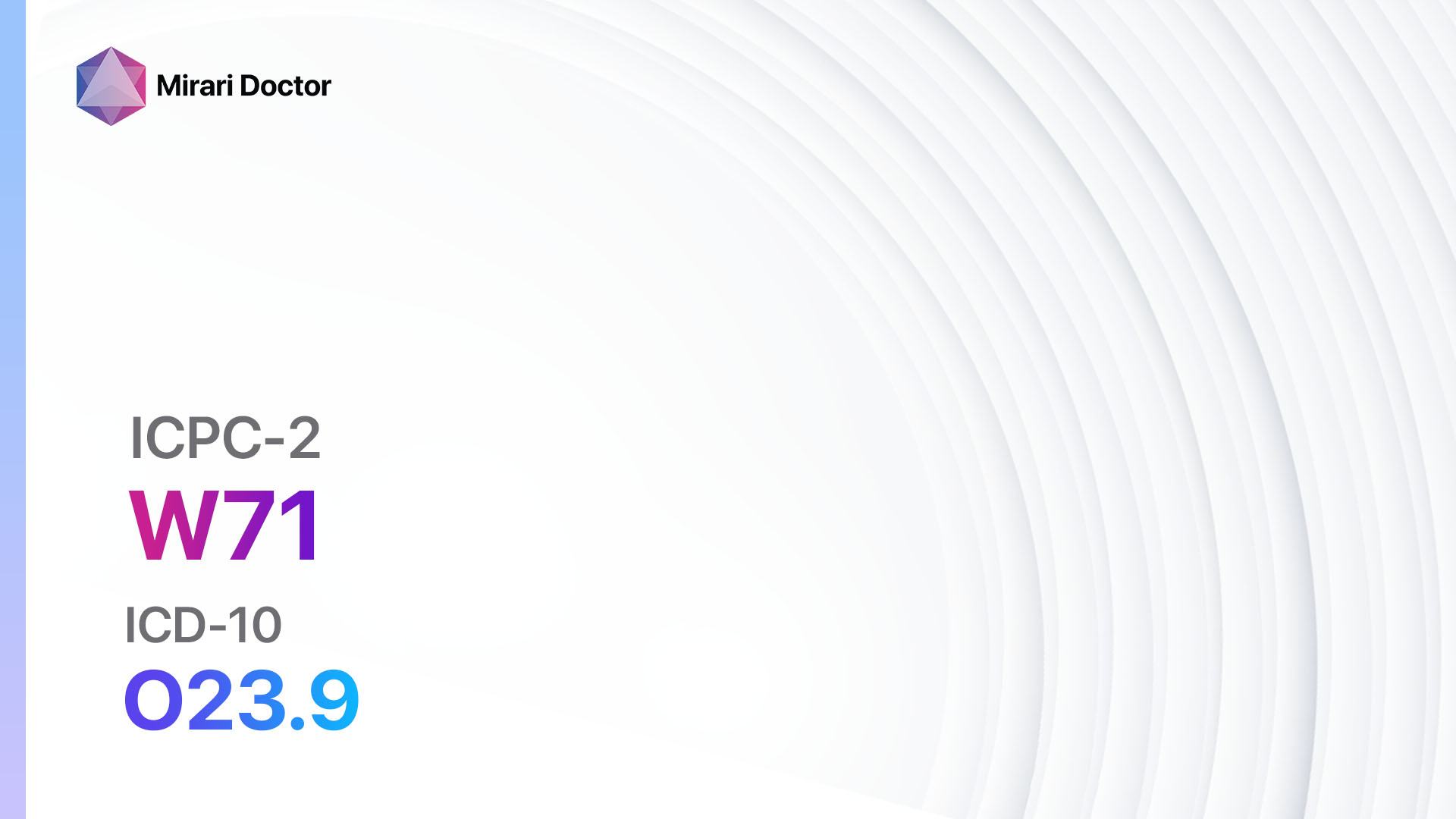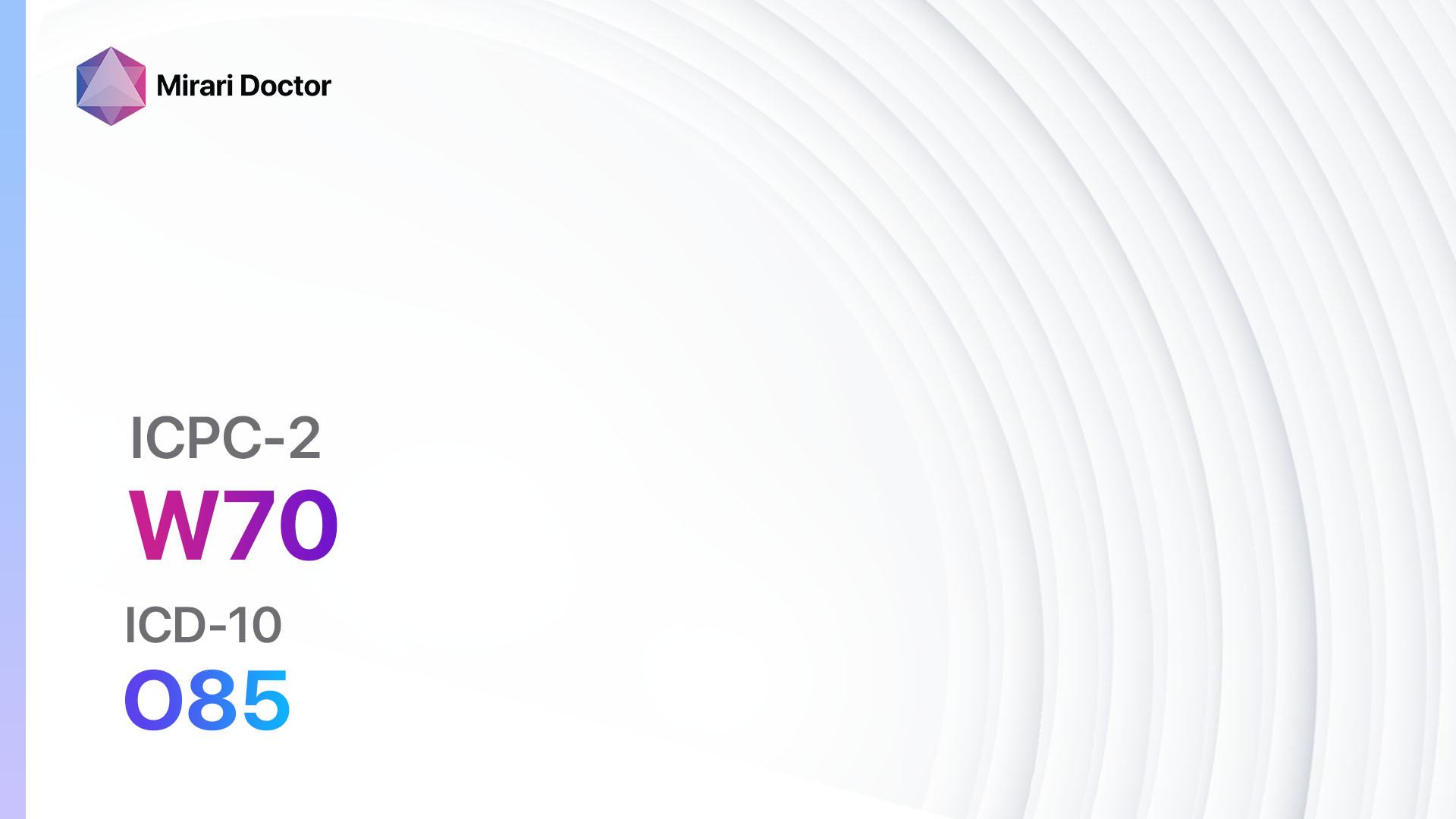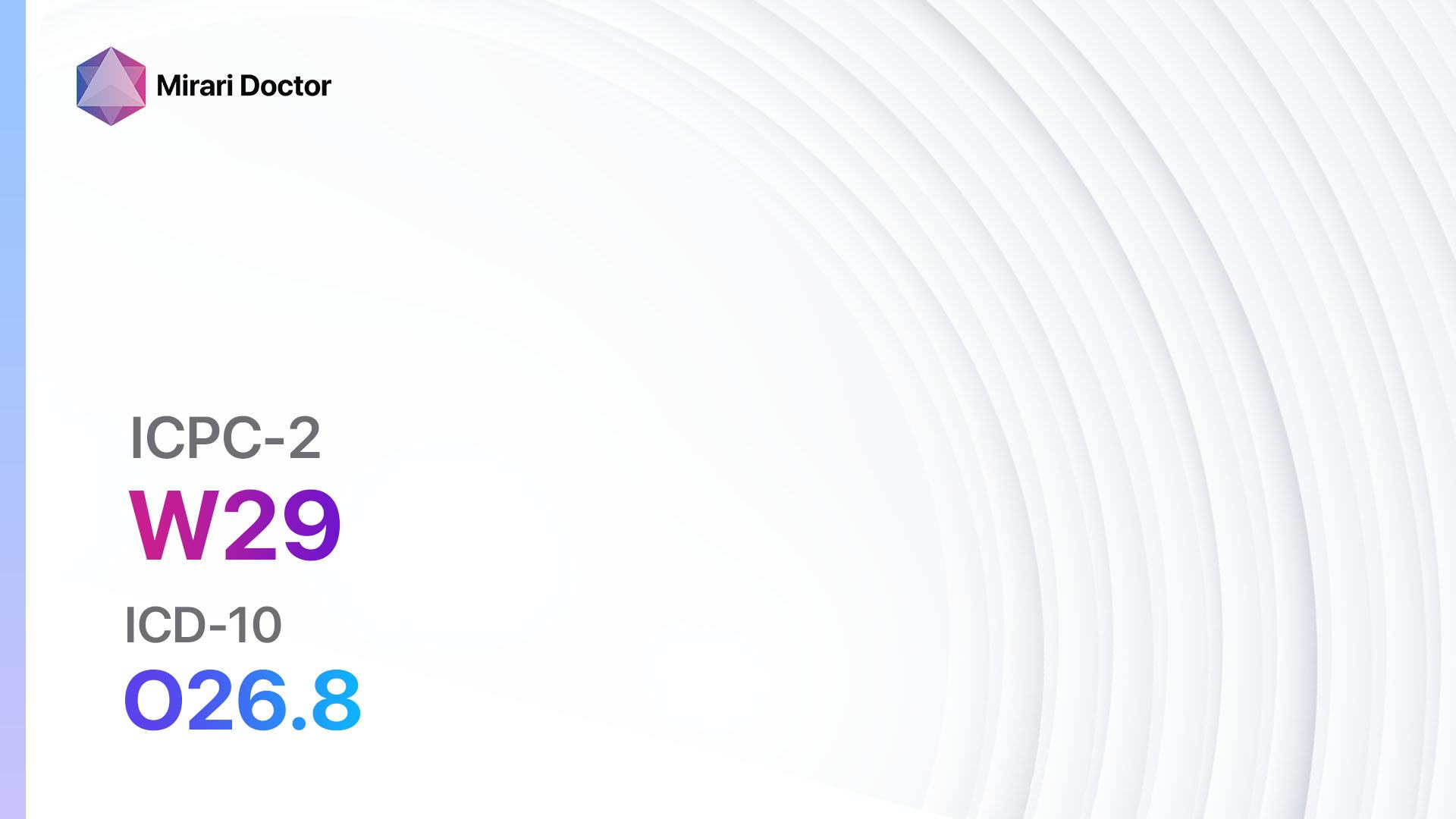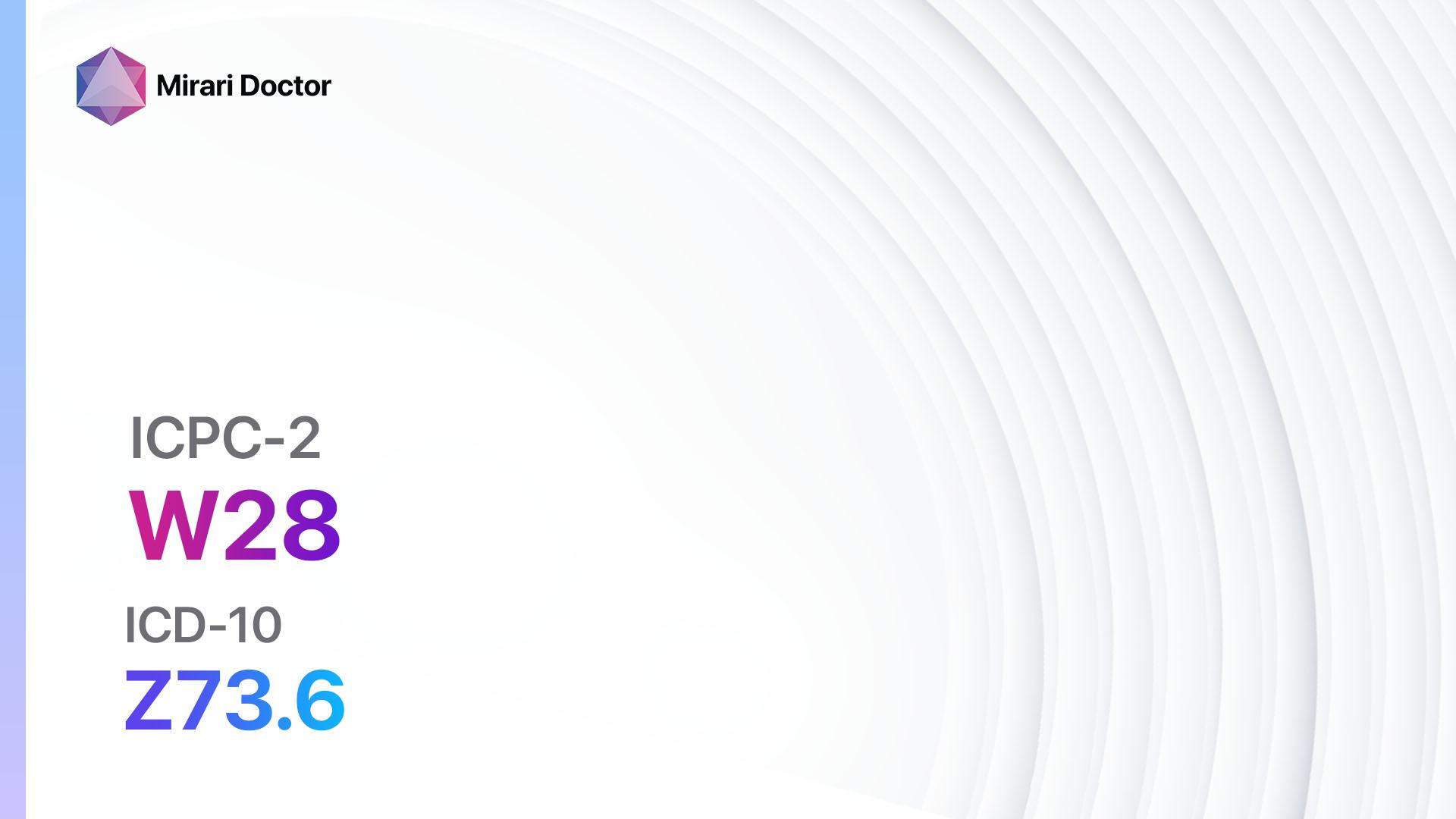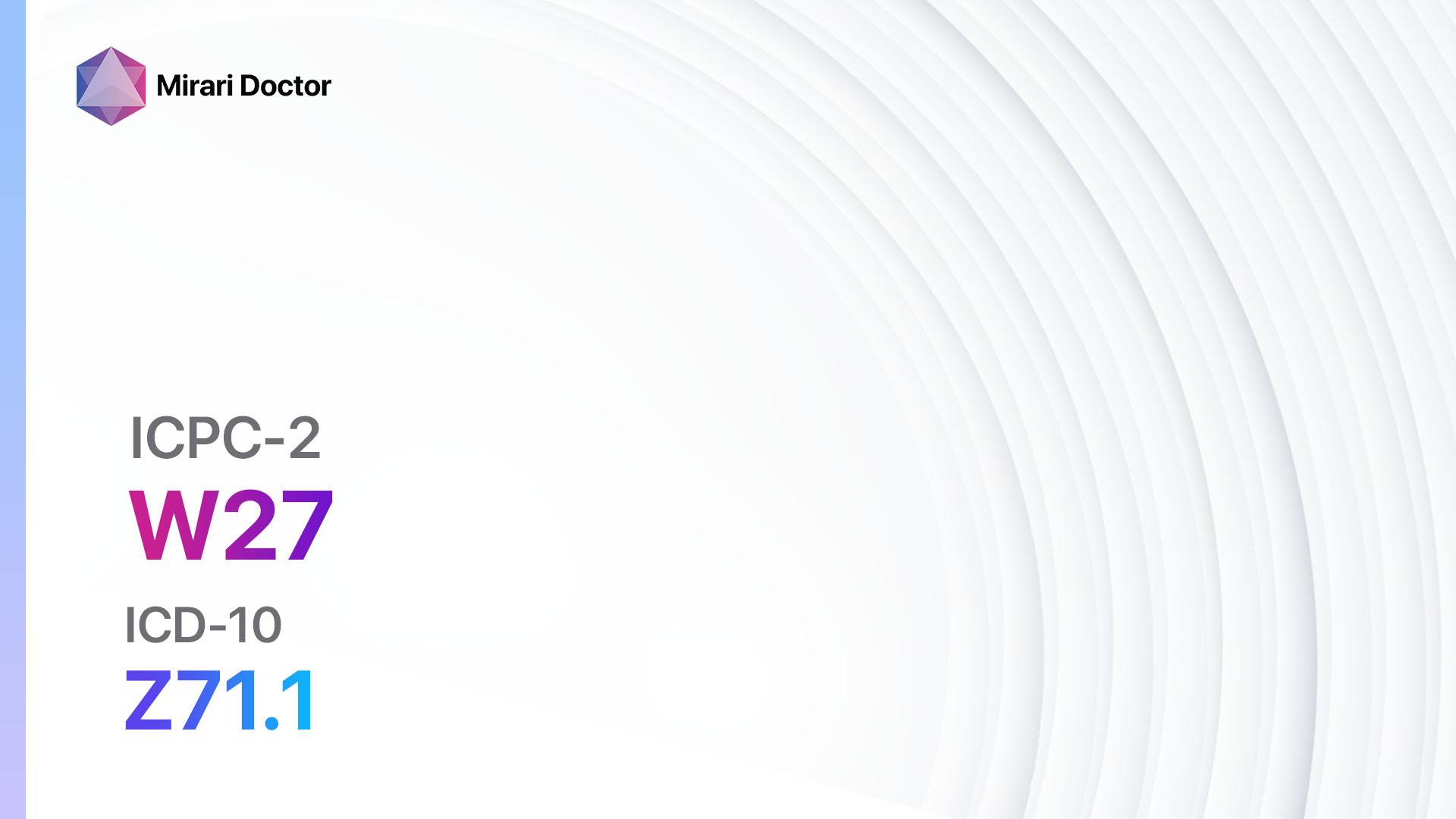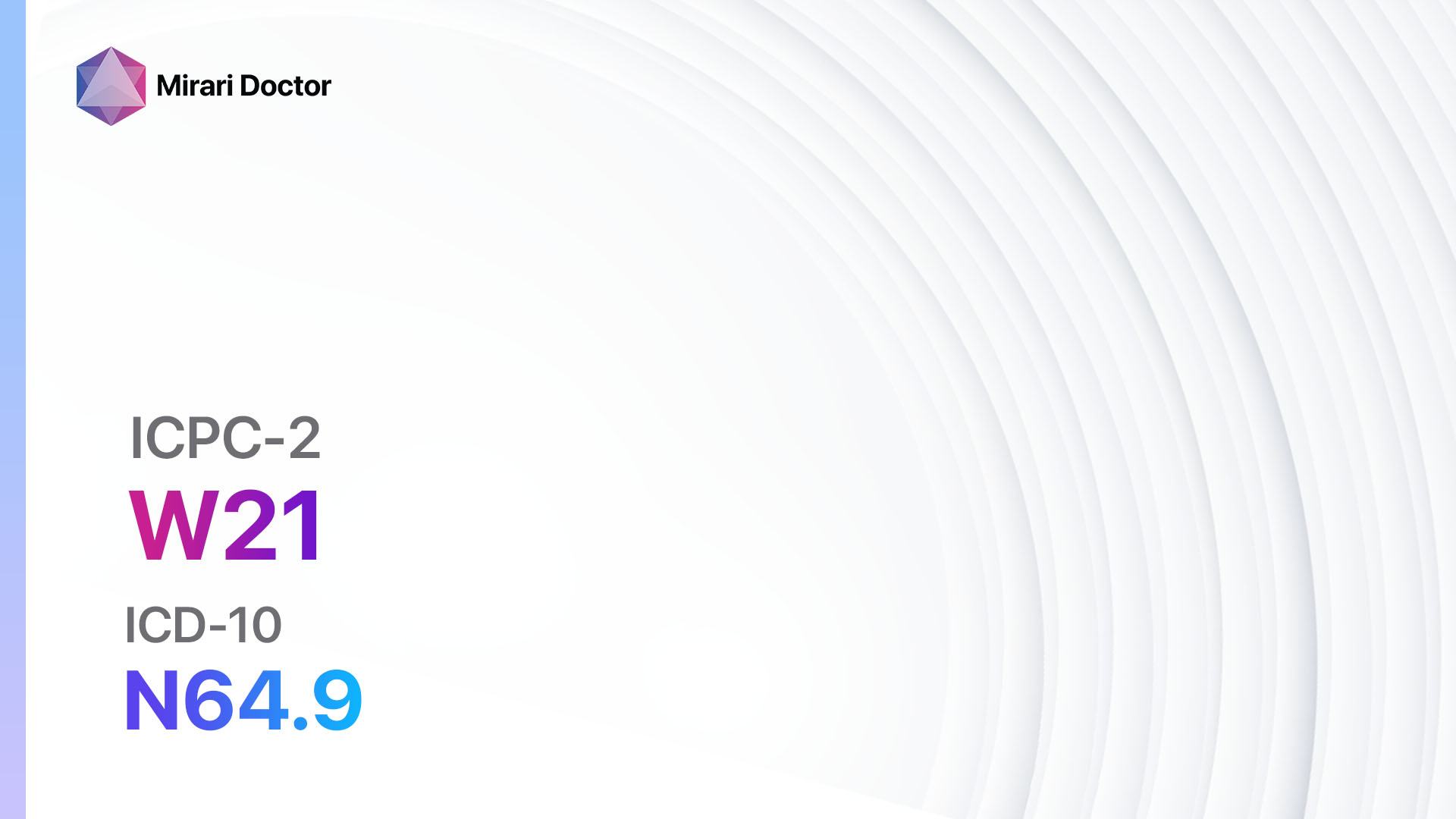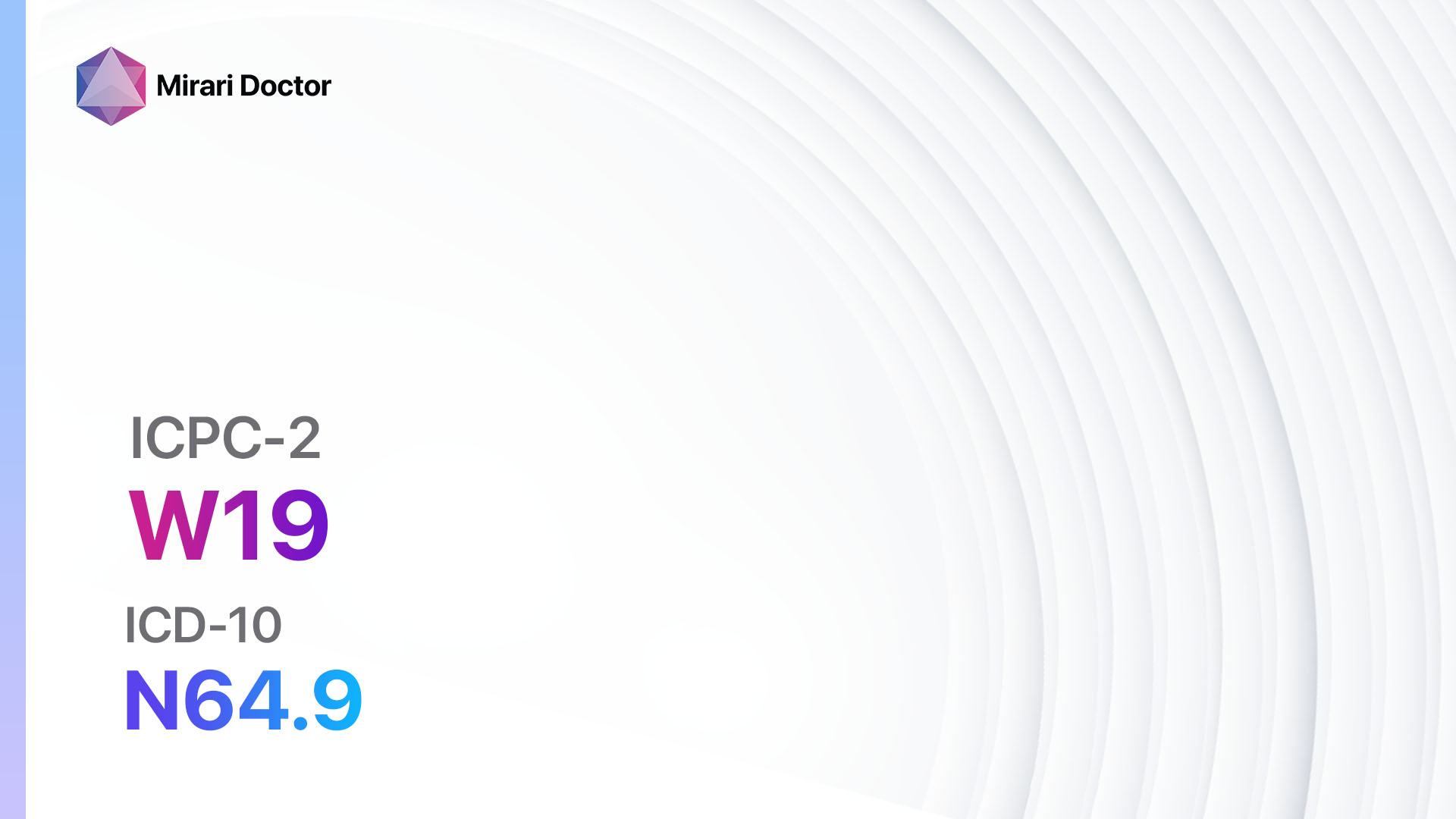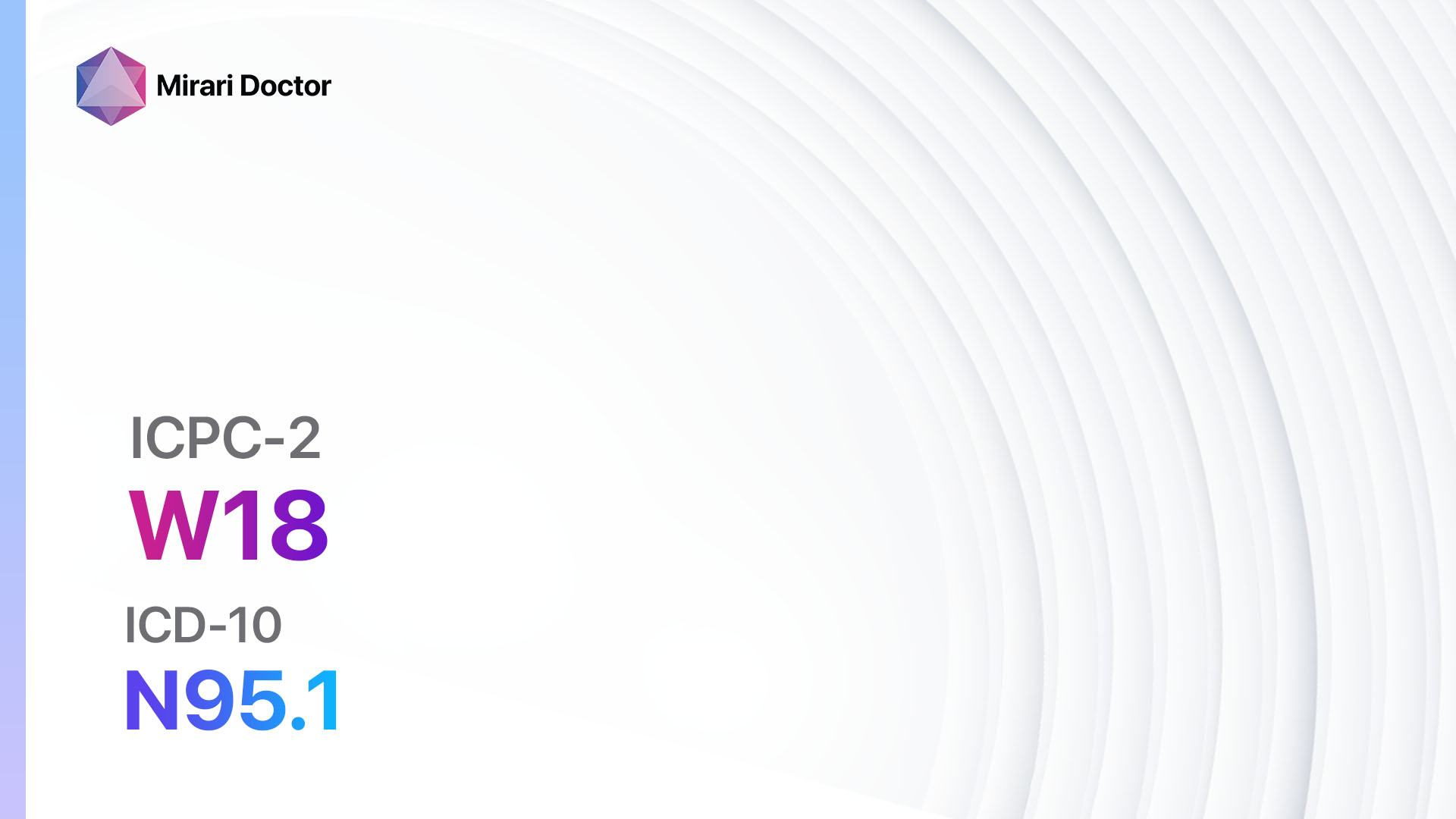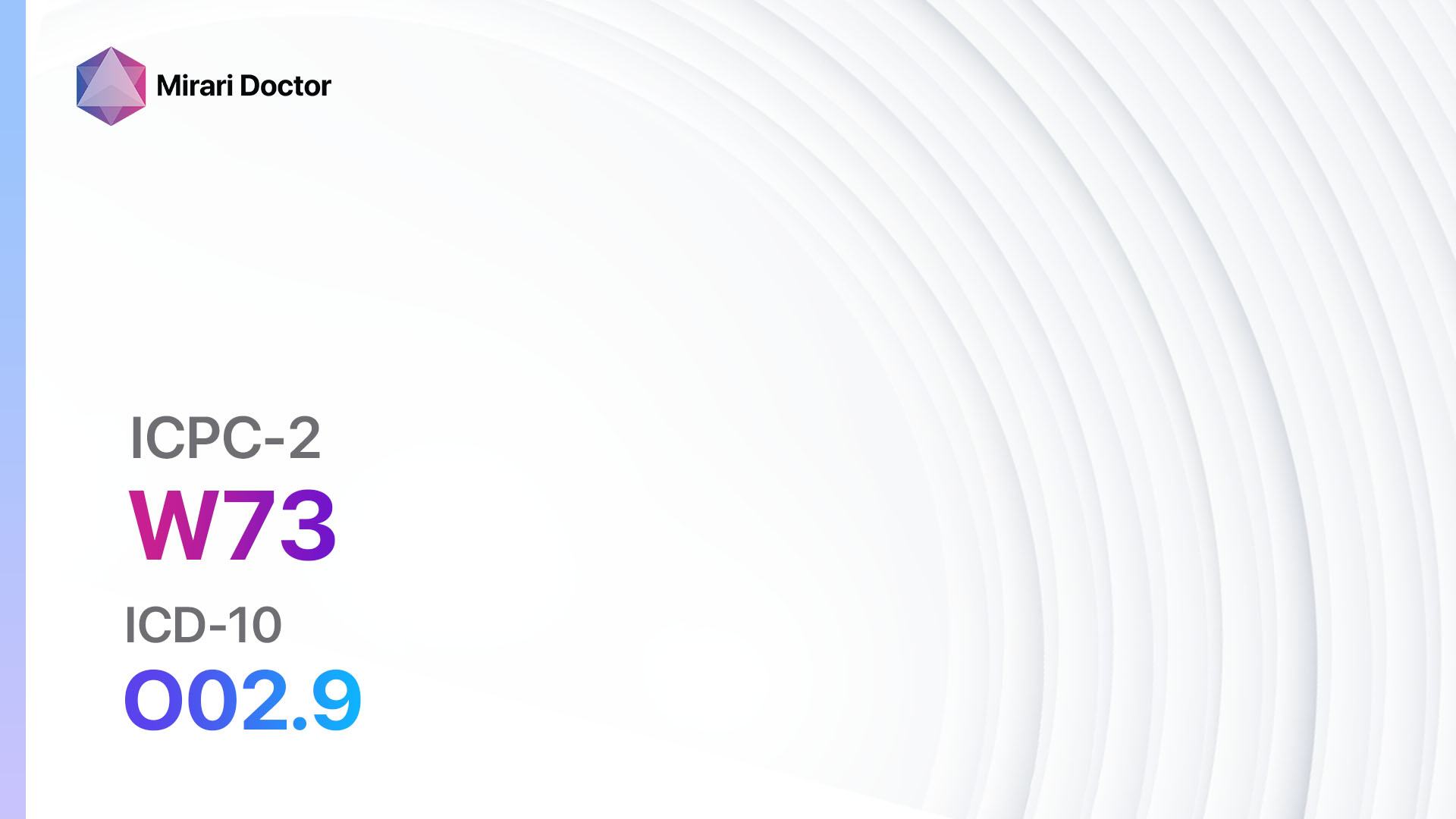
Introduction
Benign/unspecified neoplasm/pregnancy refers to the presence of non-cancerous growths or tumors during pregnancy. These growths can occur in various parts of the body and are typically not harmful to the mother or the developing fetus[1]. The aim of this guide is to provide healthcare professionals with a comprehensive understanding of the symptoms, causes, diagnostic steps, possible interventions, and patient education related to this condition.
Codes
- ICPC-2 Code: W73 Benign/unspec. neoplasm/pregnancy
- ICD-10 Code: O02.9 Abnormal product of conception, unspecified
Symptoms
- Abdominal pain: The presence of a benign neoplasm during pregnancy can cause abdominal discomfort or pain[2].
- Vaginal bleeding: Some women may experience vaginal bleeding, which can be a symptom of a benign neoplasm[3].
- Changes in bowel or bladder habits: Benign neoplasms can sometimes cause changes in bowel movements or urination[4].
Causes
- Hormonal changes: Pregnancy is associated with significant hormonal changes, which can contribute to the development of benign neoplasms[5].
- Increased blood flow: The increased blood flow to the pelvic area during pregnancy can also contribute to the development of these growths[6].
Diagnostic Steps
Medical History
- Gather information about the patient’s medical history, including any previous diagnoses of benign neoplasms or other relevant conditions[7].
- Ask about the patient’s current symptoms, including the duration and severity of any abdominal pain or vaginal bleeding.
- Inquire about any previous pregnancies and their outcomes.
Physical Examination
- Perform a thorough physical examination, paying particular attention to the abdomen and pelvic area[8].
- Look for any palpable masses or abnormalities.
- Check for signs of vaginal bleeding or other related symptoms.
Laboratory Tests
- Complete blood count (CBC): This test can help identify any abnormalities in the blood, such as anemia or infection[9].
- Urinalysis: A urinalysis can provide information about kidney function and rule out any urinary tract infections.
- Pregnancy test: Confirm the patient’s pregnancy status, as this is essential for diagnosing benign neoplasms during pregnancy.
Diagnostic Imaging
- Ultrasound: Ultrasound imaging is safe during pregnancy and can provide detailed images of the pelvic area to identify any neoplasms[10].
- Magnetic resonance imaging (MRI): In some cases, an MRI may be necessary to obtain more detailed information about the size and location of the neoplasm.
Other Tests
- Biopsy: If there is uncertainty about the nature of the neoplasm, a biopsy may be performed to obtain a tissue sample for further analysis.
- Genetic testing: In certain cases, genetic testing may be recommended to assess the risk of the neoplasm being cancerous or to identify any genetic abnormalities.
Follow-up and Patient Education
- Schedule regular follow-up appointments to monitor the growth and progression of the neoplasm during pregnancy.
- Educate the patient about the benign nature of the neoplasm and reassure them that it is unlikely to cause harm to the mother or the fetus.
- Provide information about any potential complications or warning signs that may require immediate medical attention.
Possible Interventions
Traditional Interventions
Medications:
Top 5 drugs for Benign/unspecified neoplasm/pregnancy:
- Acetaminophen (e.g., Tylenol):
- Cost: $5-$10 for a bottle of 100 tablets.
- Contraindications: Allergy to acetaminophen.
- Side effects: Rare, but can include liver damage in high doses.
- Severe side effects: Allergic reactions, liver failure.
- Drug interactions: None significant.
- Warning: Do not exceed the recommended dosage.
- Proton pump inhibitors (e.g., Omeprazole, Pantoprazole):
- Cost: $10-$20 for a month’s supply.
- Contraindications: Allergy to proton pump inhibitors.
- Side effects: Headache, diarrhea, abdominal pain.
- Severe side effects: Rare, but can include severe allergic reactions.
- Drug interactions: Some medications may require dosage adjustments.
- Warning: Long-term use may increase the risk of certain infections.
- Antacids (e.g., Calcium carbonate, Magnesium hydroxide):
- Cost: $5-$10 for a bottle of 100 tablets.
- Contraindications: Allergy to antacids.
- Side effects: Constipation, diarrhea.
- Severe side effects: Rare, but can include electrolyte imbalances.
- Drug interactions: Some medications may require dosage adjustments.
- Warning: Do not exceed the recommended dosage.
- Iron supplements (e.g., Ferrous sulfate):
- Cost: $5-$10 for a month’s supply.
- Contraindications: Allergy to iron supplements.
- Side effects: Constipation, nausea.
- Severe side effects: Rare, but can include severe allergic reactions.
- Drug interactions: Some medications may require dosage adjustments.
- Warning: Take iron supplements with food to minimize gastrointestinal side effects.
- Antiemetics (e.g., Ondansetron, Metoclopramide):
- Cost: $10-$20 for a month’s supply.
- Contraindications: Allergy to antiemetics.
- Side effects: Headache, dizziness, drowsiness.
- Severe side effects: Rare, but can include irregular heart rhythm.
- Drug interactions: Some medications may require dosage adjustments.
- Warning: Do not exceed the recommended dosage.
Alternative Drugs:
- Ginger supplements: Ginger has been used traditionally to alleviate nausea and vomiting during pregnancy. Cost: $10-$20 for a month’s supply.
- Vitamin B6: Vitamin B6 supplementation may help reduce nausea and vomiting. Cost: $5-$10 for a month’s supply.
- Peppermint oil: Peppermint oil capsules or tea may provide relief from gastrointestinal symptoms. Cost: $10-$20 for a month’s supply.
- Doxylamine succinate: An antihistamine that can help alleviate nausea and vomiting. Cost: $10-$20 for a month’s supply.
- Pyridoxine/doxylamine combination: A combination of vitamin B6 and an antihistamine that is commonly used to treat nausea and vomiting during pregnancy. Cost: $10-$20 for a month’s supply.
Surgical Procedures:
- Surgical removal of the neoplasm: In some cases, surgical intervention may be necessary to remove the neoplasm if it is causing significant symptoms or complications. Cost: Varies depending on the location and complexity of the procedure.
Alternative Interventions
- Acupuncture: May help alleviate pain and promote relaxation during pregnancy. Cost: $60-$120 per session.
- Chiropractic care: Chiropractic adjustments may provide relief from musculoskeletal pain associated with the neoplasm. Cost: $50-$100 per session.
- Massage therapy: Massage therapy can help reduce muscle tension and promote relaxation. Cost: $60-$120 per session.
- Yoga: Gentle yoga exercises can help improve flexibility and reduce stress. Cost: $10-$20 per class.
- Meditation: Meditation techniques can help reduce anxiety and promote overall well-being. Cost: Free or minimal cost for guided meditation apps or classes.
Lifestyle Interventions
- Healthy diet: Encourage the patient to maintain a balanced diet rich in fruits, vegetables, and whole grains to support overall health during pregnancy. Cost: Varies depending on food choices.
- Regular exercise: Recommend low-impact exercises, such as walking or swimming, to promote physical fitness and reduce discomfort. Cost: Free or minimal cost for activities like walking.
- Adequate rest: Emphasize the importance of getting enough sleep and rest to support the body’s healing and recovery processes. Cost: Free.
- Stress management: Encourage the patient to practice stress-reducing techniques, such as deep breathing exercises or mindfulness, to promote emotional well-being. Cost: Free or minimal cost for guided meditation apps or classes.
- Supportive garments: Suggest the use of supportive garments, such as maternity belts or compression stockings, to alleviate discomfort and improve circulation. Cost: $20-$50 for maternity belts, $10-$30 for compression stockings.
It is important to note that the cost ranges provided are approximate and may vary depending on the location and availability of the interventions.
Mirari Cold Plasma Alternative Intervention
Understanding Mirari Cold Plasma
- Safe and Non-Invasive Treatment: Mirari Cold Plasma is a safe and non-invasive treatment option for various skin conditions. It does not require incisions, minimizing the risk of scarring, bleeding, or tissue damage.
- Efficient Extraction of Foreign Bodies: Mirari Cold Plasma facilitates the removal of foreign bodies from the skin by degrading and dissociating organic matter, allowing easier access and extraction.
- Pain Reduction and Comfort: Mirari Cold Plasma has a local analgesic effect, providing pain relief during the treatment, making it more comfortable for the patient.
- Reduced Risk of Infection: Mirari Cold Plasma has antimicrobial properties, effectively killing bacteria and reducing the risk of infection.
- Accelerated Healing and Minimal Scarring: Mirari Cold Plasma stimulates wound healing and tissue regeneration, reducing healing time and minimizing the formation of scars.
Mirari Cold Plasma Prescription
Video instructions for using Mirari Cold Plasma Device – W73 Benign/unspec. neoplasm/pregnancy (ICD-10:O02.9)
| Mild | Moderate | Severe |
| Mode setting: 1 (Infection) Location: 0 (Localized) Morning: 15 minutes, Evening: 15 minutes |
Mode setting: 1 (Infection) Location: 0 (Localized) Morning: 30 minutes, Lunch: 30 minutes, Evening: 30 minutes |
Mode setting: 1 (Infection) Location: 0 (Localized) Morning: 30 minutes, Lunch: 30 minutes, Evening: 30 minutes |
| Mode setting: 2 (Wound Healing) Location: 0 (Localized) Morning: 15 minutes, Evening: 15 minutes |
Mode setting: 2 (Wound Healing) Location: 0 (Localized) Morning: 30 minutes, Lunch: 30 minutes, Evening: 30 minutes |
Mode setting: 2 (Wound Healing) Location: 0 (Localized) Morning: 30 minutes, Lunch: 30 minutes, Evening: 30 minutes |
| Mode setting: 7 (Immunotherapy) Location: 1 (Sacrum) Morning: 15 minutes, Evening: 15 minutes |
Mode setting: 7 (Immunotherapy) Location: 1 (Sacrum) Morning: 30 minutes, Lunch: 30 minutes, Evening: 30 minutes |
Mode setting: 7 (Immunotherapy) Location: 1 (Sacrum) Morning: 30 minutes, Lunch: 30 minutes, Evening: 30 minutes |
| Mode setting: 7 (Immunotherapy) Location: 1 (Sacrum) Morning: 15 minutes, Evening: 15 minutes |
Mode setting: 7 (Immunotherapy) Location: 1 (Sacrum) Morning: 30 minutes, Lunch: 30 minutes, Evening: 30 minutes |
Mode setting: 7 (Immunotherapy) Location: 1 (Sacrum) Morning: 30 minutes, Lunch: 30 minutes, Evening: 30 minutes |
| Total Morning: 60 minutes approx. $10 USD, Evening: 60 minutes approx. $10 USD |
Total Morning: 120 minutes approx. $20 USD, Lunch: 120 minutes approx. $20 USD, Evening: 120 minutes approx. $20 USD, |
Total Morning: 120 minutes approx. $20 USD, Lunch: 120 minutes approx. $20 USD, Evening: 120 minutes approx. $20 USD, |
| Usual treatment for 7-60 days approx. $140 USD – $1200 USD | Usual treatment for 6-8 weeks approx. $2,520 USD – $3,360 USD |
Usual treatment for 3-6 months approx. $5,400 USD – $10,800 USD
|
 |
|
Use the Mirari Cold Plasma device to treat Benign/unspecified neoplasm/pregnancy effectively.
WARNING: MIRARI COLD PLASMA IS DESIGNED FOR THE HUMAN BODY WITHOUT ANY ARTIFICIAL OR THIRD PARTY PRODUCTS. USE OF OTHER PRODUCTS IN COMBINATION WITH MIRARI COLD PLASMA MAY CAUSE UNPREDICTABLE EFFECTS, HARM OR INJURY. PLEASE CONSULT A MEDICAL PROFESSIONAL BEFORE COMBINING ANY OTHER PRODUCTS WITH USE OF MIRARI.
Step 1: Cleanse the Skin
- Start by cleaning the affected area of the skin with a gentle cleanser or mild soap and water. Gently pat the area dry with a clean towel.
Step 2: Prepare the Mirari Cold Plasma device
- Ensure that the Mirari Cold Plasma device is fully charged or has fresh batteries as per the manufacturer’s instructions. Make sure the device is clean and in good working condition.
- Switch on the Mirari device using the power button or by following the specific instructions provided with the device.
- Some Mirari devices may have adjustable settings for intensity or treatment duration. Follow the manufacturer’s instructions to select the appropriate settings based on your needs and the recommended guidelines.
Step 3: Apply the Device
- Place the Mirari device in direct contact with the affected area of the skin. Gently glide or hold the device over the skin surface, ensuring even coverage of the area experiencing.
- Slowly move the Mirari device in a circular motion or follow a specific pattern as indicated in the user manual. This helps ensure thorough treatment coverage.
Step 4: Monitor and Assess:
- Keep track of your progress and evaluate the effectiveness of the Mirari device in managing your Benign/unspecified neoplasm/pregnancy. If you have any concerns or notice any adverse reactions, consult with your health care professional.
Note
This guide is for informational purposes only and should not replace the advice of a medical professional. Always consult with your healthcare provider or a qualified medical professional for personal advice, diagnosis, or treatment. Do not solely rely on the information presented here for decisions about your health. Use of this information is at your own risk. The authors of this guide, nor any associated entities or platforms, are not responsible for any potential adverse effects or outcomes based on the content.
Mirari Cold Plasma System Disclaimer
- Purpose: The Mirari Cold Plasma System is a Class 2 medical device designed for use by trained healthcare professionals. It is registered for use in Thailand and Vietnam. It is not intended for use outside of these locations.
- Informational Use: The content and information provided with the device are for educational and informational purposes only. They are not a substitute for professional medical advice or care.
- Variable Outcomes: While the device is approved for specific uses, individual outcomes can differ. We do not assert or guarantee specific medical outcomes.
- Consultation: Prior to utilizing the device or making decisions based on its content, it is essential to consult with a Certified Mirari Tele-Therapist and your medical healthcare provider regarding specific protocols.
- Liability: By using this device, users are acknowledging and accepting all potential risks. Neither the manufacturer nor the distributor will be held accountable for any adverse reactions, injuries, or damages stemming from its use.
- Geographical Availability: This device has received approval for designated purposes by the Thai and Vietnam FDA. As of now, outside of Thailand and Vietnam, the Mirari Cold Plasma System is not available for purchase or use.
References
- Salani, R., Billingsley, C. C., & Crafton, S. M. (2014). Cancer and pregnancy: an overview for obstetricians and gynecologists. American journal of obstetrics and gynecology, 211(1), 7-14.
- Maggen, C., Wolters, V., Cardonick, E., Fumagalli, M., Halaska, M. J., Lok, C. A., … & Amant, F. (2020). Pregnancy and cancer: the INCIP project. Current Oncology Reports, 22(2), 1-17.
- Pavlidis, N. A. (2002). Coexistence of pregnancy and malignancy. The oncologist, 7(4), 279-287.
- Moran, B. J., Yano, H., Al Zahir, N., & Farquharson, M. (2007). Conflicting priorities in surgical intervention for cancer in pregnancy. The Lancet Oncology, 8(6), 536-544.
- Pentheroudakis, G., & Pavlidis, N. (2006). Cancer and pregnancy: poena magna, not anymore. European journal of cancer, 42(2), 126-140.
- Voulgaris, E., Pentheroudakis, G., & Pavlidis, N. (2011). Cancer and pregnancy: a comprehensive review. Surgical oncology, 20(4), e175-e185.
- Amant, F., Vandenbroucke, T., Verheecke, M., Fumagalli, M., Halaska, M. J., Boere, I., … & Lok, C. (2015). Pediatric outcome after maternal cancer diagnosed during pregnancy. New England Journal of Medicine, 373(19), 1824-1834.
- Peccatori, F. A., Azim Jr, H. A., Orecchia, R., Hoekstra, H. J., Pavlidis, N., Kesic, V., & Pentheroudakis, G. (2013). Cancer, pregnancy and fertility: ESMO Clinical Practice Guidelines for diagnosis, treatment and follow-up. Annals of oncology, 24, vi160-vi170.
- Azim Jr, H. A., Peccatori, F. A., & Pavlidis, N. (2010). Treatment of the pregnant mother with cancer: a systematic review on the use of cytotoxic, endocrine, targeted agents and immunotherapy during pregnancy. Part I: Solid tumors. Cancer treatment reviews, 36(2), 101-109.
- Pereg, D., Koren, G., & Lishner, M. (2008). Cancer in pregnancy: gaps, challenges and solutions. Cancer treatment reviews, 34(4), 302-312.
Related articles
Made in USA


